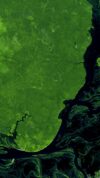

Faunomics integrates Artificial Intelligence (AI) and remote sensing technologies with traditional ecological research methods to enhance conservation efforts. This combination provides comprehensive insights into wildlife and ecosystems, improving our ability to monitor, analyze, and protect natural environments.
Join our journey!
Connect with Faunomics to analyze nature’s complexities and advance solutions. Contact us to take science-based action.

Advancing Conservation Through Technology at Faunomics
Faunomics integrates AI and remote sensing with established field methods to expand and refine our approach to ecological research and conservation. This combination enhances our understanding and management of complex environmental issues, from species preservation to ecosystem restoration. Our commitment to incorporating these technologies supports our ongoing efforts to contribute effectively to conservation science.






